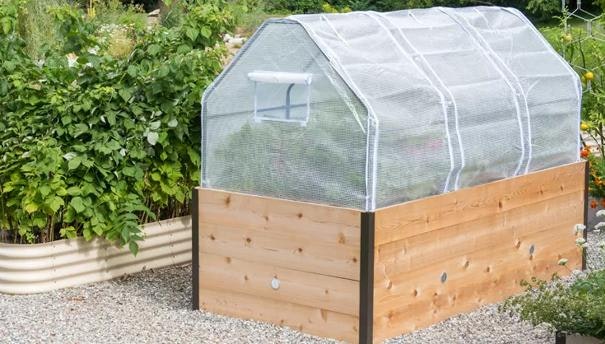
Nothing says "spring" like the heady fragrance of a gorgeous lilac. Lilacs are among the most carefree of all shrubs, and grow well in zones 3-7. Their needs are simple: plenty of sunlight, good drainage, and fertile soil. In return, you'll be rewarded with beautifully scented lavender, pink, or white blooms.
Where To Plant Lilacs
Light
Lilacs will flower best in full sun, so avoid planting them where they will be shaded for more than half a day. Be sure to plant them with enough space for future growth. Read the plant label to get the height and spread of the mature plant — some lilac varieties can reach 20-30 feet in height!
Soil
To thrive, lilacs need good drainage. Soil should retain sufficient moisture to nourish the root system yet drain freely when rainfall is abundant. To test drainage before planting, dig a hole that is about 8 inches in diameter by 12 inches deep. Fill the hole with water. If the water has not drained after one hour, choose another site.
How To Plant Lilacs
Lilacs can be planted in spring once the ground has thawed or in the fall before the ground freezes. In spring, lilacs are often shipped dormant in bare-root form. The plants are not dead, just dormant. Upon arrival, remove any packaging from the root system and soak the roots in tepid water for 10 to 15 minutes. Unsure how to plant a bare-root tree? Read How to Plant a Bare-Root Tree or Shrub and learn more. You can also purchase lilacs in pots from your local garden center.
- The planting hole should be deep and wide enough to accommodate the plant's root system.
- Place the top of the root ball level with the surface of the hole. If the lilac is bare-root, the top layer of roots should be a few inches below the surface.
- Backfill with the native soil. When filling in with soil, it is important to water thoroughly between adding scoops of soil. The idea is to remove air pockets — soil should be snug around all roots.
- During the first couple years, it is important to water your lilacs regularly. During dry weather, water more frequently. Once established though, lilacs thrive with just regular rainfall.

How To Care For Lilacs
Fertilizing
After the first growing season, granular organic fertilizer can be applied at the base of the plant early each spring to help provide the plant with nutrients for the coming year. Buds are set the previous year so the fertilizer will feed this year's leaves and next year's bloom.
Lilacs love a "sweet soil". If your soil is acidic, adding garden lime in the fall will help the soil stay alkaline.
Deadheading
If you have a repeat-blooming variety, such as Josée, deadheading will will stimulate the production of new flower and leaf buds. With other lilac varieties, deadheading is mostly cosmetic. Not required, but it does make the plant look better.
Pruning
Lilacs do not require annual pruning, but cutting off spent flowerheads within a month after bloom will help the plant concentrate on preparing more flower buds and not seeds. If your lilacs become too tall, and the number of blooms declines, you can rejuvenate the plant by cutting one-third of the oldest branches. Cut these main stems to 12 to 15 inches from the soil. This will stimulate the growth of new shoots. Pruning in this way over a three-year period will refresh the plant without sacrificing blooms.




